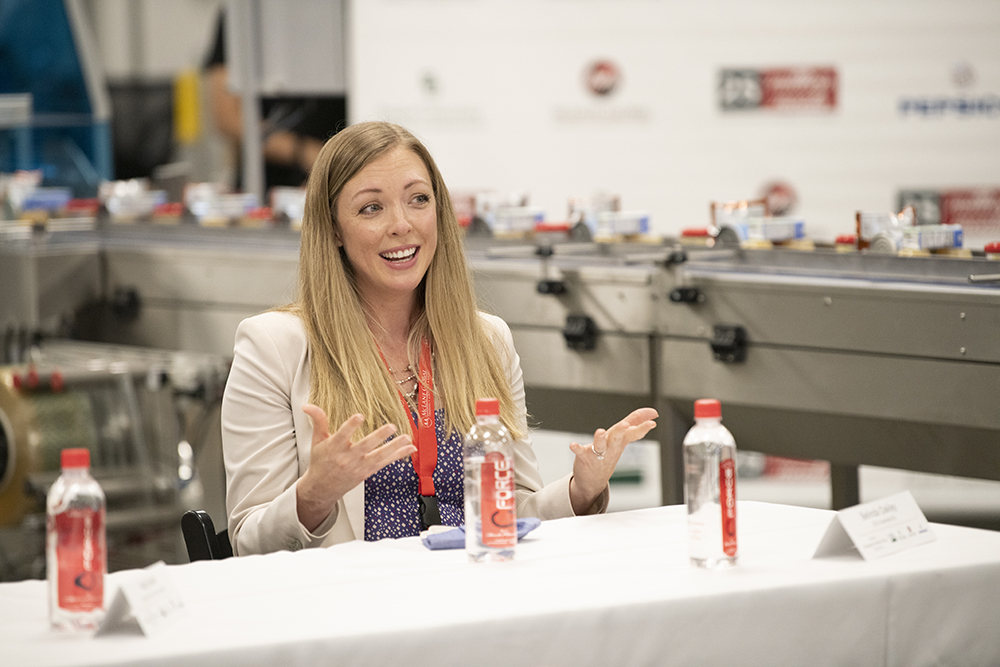How the Meals to You Program Went from a Small Pilot to Serving Millions of Meals During the Pandemic
 Community
Community
Last summer, Baylor University’s Collaborative on Hunger and Poverty launched a pilot for its Meals to You program, which shipped five days’ worth of shelf-stable breakfasts and lunches to the houses of rural students who had trouble accessing a USDA summer meal site.
The initial 10-week pilot, conducted in partnership with the USDA, involved 20 school districts throughout Texas. By the end of the summer, the program had served around 485,000 meals and was deemed a success. Program leaders were planning to expand the pilot this summer to include new districts in Texas, New Mexico and Alaska, but then COVID-19 hit.
As school nutrition teams across the country began switching to grab-and-go curbside meals, Executive Director of the Baylor Collaborative on Hunger and Poverty Jeremy Everett and his peers realized that, just like with the summer meal sites, rural students had problems accessing the food.
“The curbside meal program which worked pretty well in urban areas and suburban areas [and] just didn’t work, obviously, in areas for kids who live too far away from the school,” he says.
Instead of implementing the expanded pilot, Everett and his team decided to scale up the Meals to You program to reach students in rural districts all across the country, and schools were eager to participate.
“Initially, we were going to think about doing 20,000 kids, and then it was 100,000 kids, and then we had over 100,000 applications in the first week that we opened up the program, so we knew that we needed to expand beyond that,” Everett says. “And so, ultimately, we expanded to about 300,000 kids in 43 states and a couple of territories.”
Scaling up
In order to grow that quickly, the team at Baylor relied heavily on its program partners, especially Chartwells K12, as it was the only one with extensive first-hand knowledge of serving school meals.
One of the biggest challenges the program faced was ensuring a diverse array of menu items in the meal boxes.
“I think one of the things that we realized pretty quickly is it’s actually easy to put together a menu that meets the rules of the Summer Food Service Program that’s shelf stable,” says Chartwells K12 CEO Belinda Oakley. “But it’s not easy to put together a menu that has [an] appropriate amount of variety.”
Chartwells K12 spent weeks lining up suppliers and procuring a range of items to make sure students would not get bored with the meals each week.
“You really have to be looking at it as, ‘What would my kid want to eat?’ Or you know, ‘What’s going to make me be excited to open the cupboard for the day?’” Oakley says.
All told, the program served around 5 million meals each week over the course of the summer. Breakfast options included different types of whole grain muffins, while lunch featured menu items such as tuna or chicken salad with whole-grain crackers and tortilla chips with salsa and refried beans.
Prepping for fall
Next summer, Meals to You plans to revert back to the expanded 3-state pilot it was originally hoping to implement in 2020.
In the meantime, program officials are also going to help train school districts that would like to continue sending out meal boxes for their students in the fall.
“School districts and states have said that they want to continue to do the program in the fall, knowing some of their kids aren’t going to be able to attend school and knowing that schools may shut down for, you know, a week or two weeks at a time throughout the year,” Everett says. “We’ll kind of train them on how to do this and what types of food to order, and we’ve set up a customer service team to work with all those school districts that might want to administer the program.”
